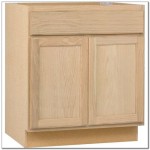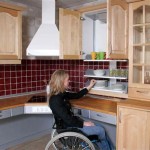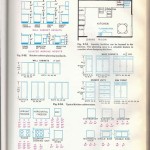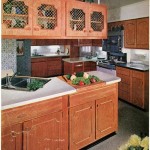How To Remove A Kitchen Cabinet Drawer
Removing a kitchen cabinet drawer might seem like a simple task, but improper technique can lead to damage of the drawer, the cabinet, or even injury. Understanding the different drawer slide mechanisms and employing the correct removal procedure for each type ensures a smooth and damage-free process.
Identifying the Drawer Slide Type
Before attempting removal, it's crucial to identify the type of drawer slides installed. Different slides utilize distinct release mechanisms, and applying the wrong method can cause problems. The most common types include roller slides, ball-bearing slides, and undermount slides.
Roller slides are typically found in less expensive cabinetry. They are recognizable by the plastic or metal rollers visible on the sides of the drawer and inside the cabinet. Ball-bearing slides offer smoother operation and higher weight capacity. They are generally made of metal and feature small ball bearings within a track. Undermount slides are concealed beneath the drawer, providing a clean, modern look. They are usually more complex and require specific removal techniques.
Removing Drawers with Roller Slides
Removing a drawer with roller slides is usually straightforward. First, fully extend the drawer. Next, examine the sides of the drawer for any levers or tabs. Some roller slides have a small lever or tab that needs to be depressed or lifted to release the drawer from the tracks. If no such mechanism is present, the drawer can often be removed by simply lifting it slightly as it's fully extended and pulling it out.
If the drawer doesn't lift out easily, check for plastic or metal stops at the back of the tracks. These stops prevent the drawer from being accidentally pulled out too far. Gently depress or maneuver these stops while simultaneously pulling the drawer forward to release it.
Removing Drawers with Ball-Bearing Slides
Ball-bearing slides often feature a release lever or clip located on the underside of each slide, near the back of the drawer. To access these levers, fully extend the drawer. Locate the levers, one on each side. They might be plastic or metal, and may require pressing upwards, downwards, or inwards depending on the specific design.
Simultaneously activate both levers while gently pulling the drawer forward. Once the levers are disengaged, the drawer should slide out of the cabinet easily. If the drawer doesn't release, double-check that both levers are fully activated. Some ball-bearing slides have a locking mechanism that requires a specific sequence of movements to disengage. Consult the manufacturer's instructions if necessary.
Removing Drawers with Undermount Slides
Undermount slides are typically the most complex to remove, as the release mechanism is hidden beneath the drawer. The specific process varies significantly depending on the brand and model of the slides. Some undermount slides have a lever or button located on the underside of the drawer box, while others require a specific tool or sequence of movements.
Consult the cabinet manufacturer's instructions or the slide manufacturer's website for specific removal instructions. Look for identifying markings on the slides themselves, which can often help determine the brand and model. In some cases, removing a small access panel on the cabinet frame may be necessary to access the release mechanism.
General Precautions
Regardless of the drawer slide type, certain precautions should always be observed. Always support the weight of the drawer during removal, especially for heavier drawers. Failing to support the drawer can cause it to fall and result in damage or injury.
Empty the drawer of its contents before attempting removal. This reduces the overall weight, making the drawer easier to maneuver and less likely to cause damage. It also prevents items from shifting or falling out during the removal process.
If encountering resistance or difficulty, avoid forcing the drawer. Forcing the drawer can damage the slides, the cabinet, or the drawer itself. Consult manufacturer instructions or seek professional assistance if necessary.
Taking the time to identify the drawer slide type and employing the correct removal procedure ensures a smooth, efficient, and damage-free process. Observing basic safety precautions and avoiding excessive force will further contribute to a successful outcome.

How To Remove Soft Close Drawer Kitchen

How To Replace Kitchen Drawers Shelfgenie

Kitchen Repair Tips How To Remove Soft Closer Cabinet Drawer

How To Replace Kitchen Drawers Shelfgenie

How To Remove Cabinet Drawers

How To Remove Kitchen Cabinets Pkb Cabinetry

How To Remove Drawers With The Most Common Types Of Drawer Slides

How To Remove Install A Kitchen Drawer From Cabinet

How To Remove Dresser Drawer With Center Metal Slide

How To Remove Techline Lateral File Drawers
Related Posts








